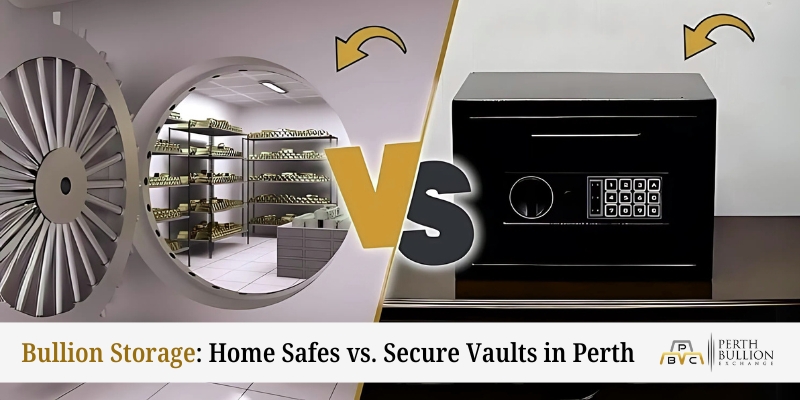How to Invest in Bullion Through a Self-Managed Super Fund (SMSF)
Do you want to be in charge of your retirement and everything that happens afterwards? Bullion investment in a Self-Managed Super Fund (SMSF) is an option that is becoming popular among smart Australians. SMSFs provide a special means of hedging against market fluctuations with the stability of precious metals such as gold and silver.
However, before getting into it, it is necessary to know the rules, responsibilities, and rewards of this investment strategy. So how about we simplify this?
What Is a Self-Managed Super Fund (SMSF)?
Self-Managed Super Fund (SMSF) is a personal superannuation fund that places the control in your own hands. An SMSF allows the members to manage their retirement savings, unlike traditional retail or industry super funds.
There are essential trustee duties that you have to fulfill as a trustee, and they include administration of funds, investment decisions, and remaining compliant with the Australian super and tax laws. This control provides you with more investment opportunities, including property, shares, and even tangible assets such as bullion.
How Does a Self-Managed Super Fund Work?
Setting up an SMSF involves creating a trust deed, registering for an ABN and TFN, and making contributions within the annual limits. Once your fund is established, you can tailor your investment strategy to suit your risk tolerance and retirement goals—whether that means generating regular income or focusing on long-term capital growth.
SMSFs enable you to have a customized investment plan, whether you are looking at regular income or long-term growth.
Key Benefits of an SMSF
An SMSF offers several advantages over standard super funds. The main benefits of an SMSF include:
- Full control over your super investments
- Wider choice of asset classes, including bullion and real estate
- Greater tax planning flexibility
- Customised retirement strategies
- Potential to reduce long-term tax liabilities
Steps to Invest in Bullion Through an SMSF
Investing through SMSF is one of the most common ways Australians are investing in physical bullion, such as gold, silver, or platinum, in an SMSF. This is a growing trend among Australians who want to diversify their retirement portfolio with tangible assets. But there are stringent rules. To make your investment compliant and tax-efficient, you must take the following steps.
1. Review Your SMSF Investment Strategy
It is necessary to consider your SMSF investment strategy before investing in bullion. Alternative assets such as gold, silver, or platinum bullion must be allowed in this strategy. It must also explain how the bullion investment helps your fund achieve its retirement objectives, considering issues such as diversification, liquidity and risk.
ATO has stipulated that SMSFs must have a compliant and up-to-date strategy; therefore, make sure your bullion investment is in line with these requirements. Revise the document, if needed. You should seek the advice of a licensed financial advisor to determine whether it is right for you to invest in bullion in your SMSF portfolio.
2. Choose the Right Type of Bullion
Your SMSF is able to own physical bullion as long as it is of investment-grade quality. Acceptable forms are gold bars and coins, silver bars and coins and platinum bullion. These should be of high purity, say 99.5 per cent or more, and accepted by international markets. Rare or collectible coins should be avoided because they may not be compliant with SMSF regulations.
Bullion ought to be easily exchanged and impartially priced. You may be investing in gold bullion or silver bullion; make sure the kind you invest in fits the purpose of your fund. Liquidity and long-term value of each metal are important when choosing the most suitable bullion investment in your SMSF portfolio.
3. Buy from a Reputable Bullion Dealer
Always use a well-established Australian bullion dealer when buying bullion in your SMSF. Select a seller that is a member of the Australian Bullion Dealers Association (ABDA) or other industry association, as this assures that they will operate to ethical and regulatory standards. The dealer must offer an authenticity certificate, safe delivery and insurance cover.
It is also imperative to be transparent in pricing and storage arrangements. Be it gold bars or silver coins, you can minimize the risk of fraud or non-compliant investments by dealing with a reliable party. Always keep receipts and documentation of purchases in the name of your SMSF for record-keeping and compliance purposes.
4. Secure Storage and Insurance
Physical bullion acquired in the framework of an SMSF should be stored safely and independently of personal property. The most desirable is professional vault storage or a bank safety deposit box in the name of the SMSF. Bullion should not be stored at home, and it may be a violation of the ATO.
To secure the asset, it is essential to insure the bullion as well in the name of SMSF, not in the name of the trustee personally. Insuring and storing of bullion in an SMSF in a proper manner shows that the fund has sole ownership and control of the asset. The protection also facilitates SMSF compliance and reduces risk to your retirement investment.
5. Maintain Compliance Records
It is also essential to make proper records when investing in bullion using your SMSF. You should record all steps of the transaction procedure, purchase invoices, dealer receipts, insurance certificates, storage agreements, and independent valuations. The documents will be needed in a yearly SMSF audit and are obligatory to be ATO compliant.
There should also be a regular update of the financial reports of the fund to indicate changes in the market value of the bullion. You can keep detailed and comprehensive records of compliance, which will guarantee transparency and safeguard the status of your fund. It is also helpful to have good record-keeping to allow future planning of bullion investments.
Conclusion
Investing in bullion through an SMSF can be a powerful way to protect and grow your retirement savings using tangible assets like gold and silver. However, strict compliance with ATO regulations is essential—covering everything from strategy formulation to secure storage and audit documentation.
For expert advice, premium bullion products, and secure storage solutions, contact Perth Bullion Exchange today and take control of your future with confidence.




Comments
Post a Comment